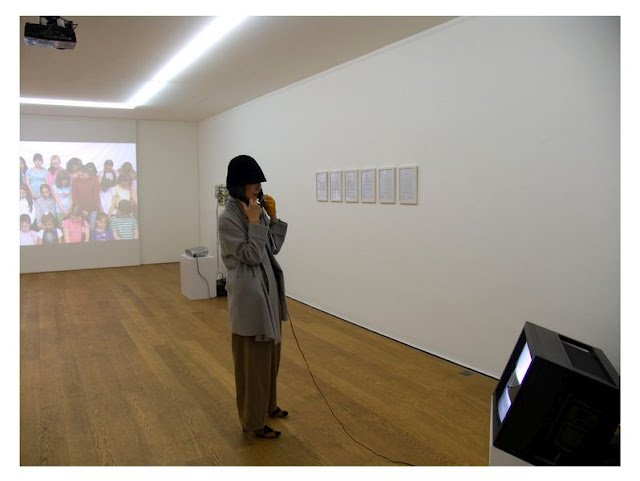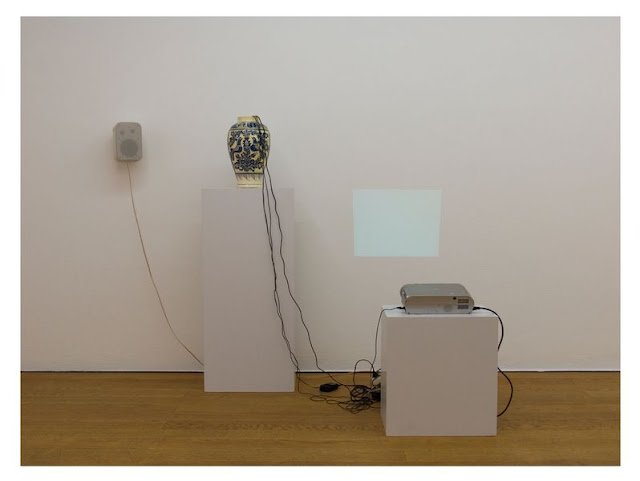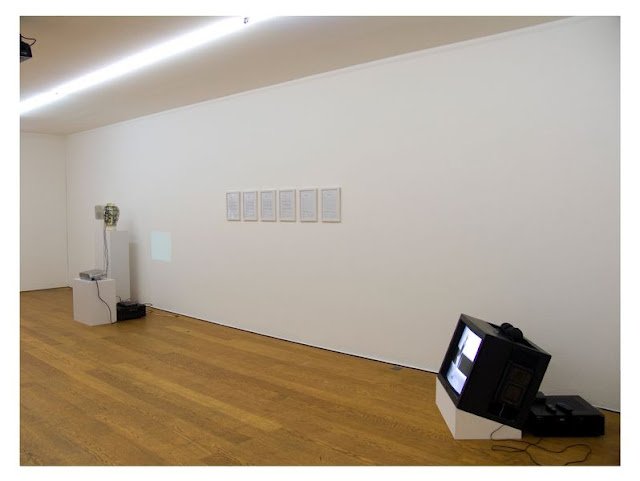REPORT: The Glass Factory Lab residence and Time's Own Insult exhibition
I've been invited to create new work in glass this summer in a very special place in Sweden. Since my arrival in Boda at the Glass Factory, up until my departure a week later my time and mind were flooded with amplitude of thoughts and curiosity. I was lucky to work closely with a very kind and gentile curator, Maja Heuer, who trusted my instinct towards glass politics. Time becomes suddenly precious when a curator genuinely believes and risks. Maja did that so perfectly and with an eye for what this experience can mean for the future of The Glass Factory. Being invited there meant that I will collaborate with one of Sweden's esteemed artists, Åsa Jungnelius, for whom I have only admiration and love.
Åsa meant a lot for my establishment in Boda and had been a close link to my performance work. We agreed that one of her installations will be shown in the gallery space of the factory and so we did. Before leaving Romania, I've been thinking of her works and made notations to a specific one, called "A study of the relationship between the hole and the pole". This particular piece has moved me from the first time I saw it on the web. I've been traveling to Sweden with this work in mind. It had occupied my thoughts before meeting it in reality. What strikes me vis a vis this work is its frankness and capacity to enmesh romanticism and philosophical dissertation with my research on chronic occupation of time, action versus duration and anti-duration and political evidence.
The thought of collaborating with an art work gave me a perfect conceptual frame in which to insert the machinery of pending works. Noticing its grandeur, the relationship between me and it, empowered a couple of films to emerge as starters, including instrumentations using complicated installations with video projectors beaming from the hotel's window into the near forest etc, works that are still in process.It become a very interesting co-performer within my project, and a very present one in my future work.
© Alex Mirutziu
© Alex Mirutziu
© Alex Mirutziu
At the heart of the Glass Factory is the hotshop, a place where the core of my project was objectified, with the major help of two amazingly talented and dedicated people, who became my friends, Bjorn Friborg and Christopher Ramsey.
These two guys have made a wonderful job in its difficulty to fix my face into life masks. They've been so cooperative and careful with the whole process of casting and then with the glass process, that every day of work with them was flawless. We’ve been surpassing formulation and began implementing in a blink of an eye. Bjorn, a Danish guy, very uplifting, sensitive and caring, very interesting in his performative approach to blowing glass; had been collaborating with many artists among others Fredrik Nielsen. He had found time to help me with advices and so home like food, when working for the performance.
Christopher’s attitude towards my work and the project initiated in his studio was more than welcoming, with a calmness and readiness mixed with a warm character. He's been studying design in America and since then had made a name for himself close to glass making. Together with Maja, they were my family for the whole duration of the residency.
In the second part, I will write few observations regarding my experience with glass.To have a better understanding of the conceptual frame of my project I have to quote myself:
”There are two important conceptual triggers vis a vis Pending Works machinery. The first questions the reliability of the event and its performativity within a fluctuating timeline. The second refers to the cathexis of time and action versus duration and anti-duration and political evidence. Ultimately the chief interest in Pending works lie in the dialectic between evidence and the event as transformative of each other. I am very much interested in the idea of the chronicisation of time, and how this chronic time contaminates the work’s informational cue, and transitivity.
© Alex Mirutziu
© Alex Mirutziu
© Alex Mirutziu
I've been very much interested in the idea of creating life-masks at twenty-nine years old in order to perform their time over and over again; if possible to create a sort of medium out of a specific age. The logistics of this idea were very much in the hands of Chris and Bjorn, reason why I tend to say that it was a collaborative project not a solo one. Therefore I have found it very intriguing to travel to Sweden to have two people embed my corpus for eternity at twenty-nine. It is a colossal action that implies criticality towards time and medium. Very rarely one gets so close to someone else in capturing its true image; life-mask is the only medium to do that.
© Alex Mirutziu
© Alex Mirutziu
For this reason we've been attentive to all the details possible regarding composite materials and burning process to make this thing possible for others to see. It takes 500 degrees to heat up so history can accommodate this moment in time. Moreover there is of course the importance of the material itself, as it is alive and stubborn at times, in one word a mass of tension, that needs to be respected and carefully maneuvered. Even if at first glance this medium may look unattached to my métier, it has a very important feature that establishes it close to the more common ones in my practice, and that rests in its meditative nature, its relentless mediation, and fragility. These are very important notions in my work.
If there is a conclusion that needs to be marked, it would refer somehow to the importance of devising the concept and to the collaborative nature and its instrumentation. I’ve learned that approaching another material or medium takes time and understanding, and last but not least a dose of humbleness. I’ve chosen the best material out there that will constantly talk back to me and possibly to others. Glass has all I got at 29
© Alex Mirutziu
© Alex Mirutziu
© Alex Mirutziu
© Alex Mirutziu
REARVIEW MIRROR: NEW ART FROM CENTRAL AND EASTERN EUROPE // On view until 5 September, 2011
Curated by Christopher Eamon
Organized by The Power Plant and the Art Gallery of Alberta
Rearview Mirror is a large thematic exhibition that brings together the work of a new generation of artists from Central and Eastern Europe. Looking both to the past and to the future, the works by the twenty-two artists in the exhibition engage post-conceptual strategies and forms, and collectively challenge accepted notions of Eastern Europe as a social, political and art historical monolith.
In an attempt to alter stereotypes of Eastern Art and "Easternness" in general, the exhibition is a kind of preliminary experiment and dialogue in the post-socialist period. Twenty years after the fall of the Berlin wall, one might expect great changes in the cultural practices in the region known since the Yalta agreement as the "Eastern Bloc" even though the political cultures and histories of the various nations comprising it greatly diverge. Indeed this is the case in many practices that have been selected mainly for the artists' choices of non-traditional forms that range in media from video, installation and performance to sculpture and painting.
Related posts:
» Rearview Mirror at THE POWER PLANT - 1 July - 5 September, 2011
Rearview Mirror is not an exhibition that attempts to be all-inclusive or encyclopedic. It brings together the work of artists from diverse backgrounds and histories to look at the non-traditional practices of a younger generation of artists from the last decade, presenting an opportunity to view artworks by relative newcomers such as Ciprian Muresan, Gintaras Didziapetris and Anna Molska in the context of some of their contemporaries already known through international art circuits such as Pawel Althamer, Roman Ondák and Wilhelm Sasnal.
Christopher Eamon is a Canadian-born, New York-based independent curator who has curated numerous international exhibitions, and edited and written for a wide number of publications.
The exhibition is a co-presentation with the Art Gallery of Alberta, where it will be on view from
27 January – 29 April, 2012. Rearview Mirror is accompanied by a substantial publication, co-published by The Power Plant and the Art Gallery of Alberta.
Pending works & Scotopolitic Object - solo show at Galerie Rüdiger Schöttle, in Munich
© Pending Work #7 / Alex Mirutziu
PENDING WORKS & SCOTOPOLITIC OBJECT
ALEX MIRUTZIU
Galerie Rüdiger Schöttle
01.07. - 06.08.2011
Opening: 30.06.2011
“Pending Works and Scotopolitic object” is the title of this gallery’s second solo exhibition of the Romanian artist Alex Mirutziu. Specially created for this exhibition are video pieces, photographs and objects, the concept behind which he himself explains as follows:
“Pending Works operate within a nexus of processes, interactions and mediations that are clearly distinguishable as non-linear, non-cumulative and task-based, with the focus not on what is happening but on when it is happening. What is expressed neither describes nor represents existing matrixes of recognition but rather reformulates possibilities. Images, language and signs are critical engagements with reality and not merely its representation. My attention is devoted to work that is not primarily a productive, result-oriented process. This work may be seen as a complex time frame of the art project, as pure activity that occurs in time. This new practice induces you to look beyond; is there a real there – at all? It reaches beyond the specific realization of an idea towards an expanded cultural and social field. I believe that this particularity is a call for thought, beginning with the artist who applies a task-based principle of announcing the time frame of each work for the different ways it may be observed. This then gives rise to questions on: internal duration of the idea versus external duration of the work; sufficiency of time and its relevancy; how much volume of thought and processed thinking can be put into a specific time frame?
Scotopolitic is the term I have coined to designate an object situation that generates a complex dynamic between the discourse of darkness that exists as a choice – one that should not have language – and an object’s communal and public relevance. Its comprehension evolves between silence, mediation and representation.
Between example theory and negation theory, Scotopolitic object draws attention to the insistence on its captive insight; and, through the repetitive carving of its insight, develops an institutional theme. Its strategic discourse operates on a thin layer of self-contemplative uselessness, bringing the jungle of darkness into the surrounding public space. Finally, what must be considered in this object situation paradigm are the ways these resolutions are negotiated within a larger public environment.”
Alex Mirutziu, born in Romania in 1981, lives and works in London and Sibiu.
More info here
Moving Image comes to London during Frieze week
Moving Image, the fair dedicated entirely to video art that launched during The Armory Show in New York in March, will make its London debut to coincide with Frieze Art Fair this year.
Conceived by New York art dealer Ed Winkleman and business partner Murat Orozobekov, the London edition (13-16 October) will launch at the Bargehouse, a four-floor warehouse on the Southbank, only a stone’s throw from Tate Modern. The proximity is no coincidence. “The two museums that are really putting serious resources into collecting contemporary video are the Whitney in New York and Tate Modern,” said Winkleman. “It's clear that there's a recognition of the importance of video art in London.”
The fair will be almost exactly the same size as in New York, with around 30 galleries, and will follow the same format, featuring a mixture of single-channel works and larger installations, although there will be more emphasis on large-scale pieces. “With a total of 15 different rooms, the possibilities for more experiential installations are greater,” said Winkleman. The price of exhibiting remains the same: a single-channel monitor costs $2,500 and an installation $5,000.
An advisory committee, including John Connelly of the Felix Gonzalez-Torres Foundation, Solange Farkas of the Associação Cultural Videobrasil, Mami Kataoka from the Mori Art Museum and Elizabeth Neilson of the Zabludowicz Collection, will recommend which galleries to invite. A fifth advisor will come from Europe, according to Winkleman, who is aiming for a truly international spread of galleries, something he concedes was lacking at the New York fair.
The inclusion of Farkas and Kataoka represents a deliberate push into the Asian and Latin American markets. “It was important for us to have Mami on the committee because one of the things we wanted to look at was bringing in more Asian galleries,” said Winkleman. “She is working specifically throughout East and Central Asia right now, so she's perfect.” Latin America is also very much on Winkleman's radar. “We invited Solange because we are reaching into South America at the moment,” he said.
► More info here
































